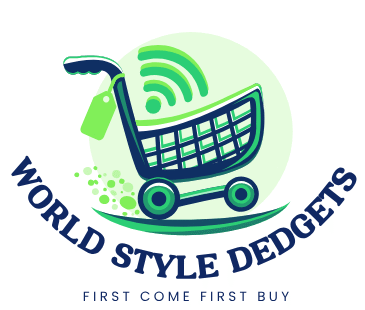Meta Description: Discover the ultimate guide to the smart casual dress code for men. Learn what it means, how to style it for work or social events, and tips to master modern men’s fashion.
Introduction: Decoding Smart Casual in 2025
If there’s one dress code that confuses men more than any other, it’s smart casual. It’s not as relaxed as throwing on jeans and a hoodie, but it’s not as rigid as business formal either. Smart casual sits comfortably in the middle—a blend of polished and relaxed style that works for everything from office meetings to weekend dinners.
In today’s fashion landscape, especially post-2020 when remote work blurred traditional dress codes, smart casual has become the default uniform for modern men. Whether you’re heading to a client lunch, a date, or a casual Friday at the office, mastering smart casual is an essential skill.
This article breaks down exactly what smart casual means, how it differs from other dress codes, and how men can nail it with confidence in 2025.
What Does Smart Casual Really Mean?
The phrase “smart casual” might sound contradictory, but it’s best understood as dressing neatly without going overboard. It balances professional sharpness with casual comfort.
Think of it this way:
-
Too formal? Swap your tie for an open collar.
-
Too casual? Upgrade your sneakers to loafers or Chelsea boots.
At its core, smart casual combines:
-
Polished pieces (blazers, button-downs, tailored trousers)
-
Relaxed items (well-fitted jeans, polos, knitwear)
-
Versatile footwear (dress sneakers, brogues, boots)
The goal: Look put-together but approachable.
The Evolution of Smart Casual
The concept of smart casual has shifted with time:
-
1950s–1960s: Smart casual meant sports coats, collared shirts, and dress shoes for informal outings.
-
1980s–1990s: Tech companies in Silicon Valley popularized “business casual,” leading to khakis, polos, and sweaters.
-
2020s–2025: With hybrid work and lifestyle shifts, smart casual is now the most adaptable dress code, bridging comfort and professionalism.
This evolution explains why you might see different interpretations of smart casual depending on context—an office in London may lean formal, while a New York startup embraces sneakers and denim.
Smart Casual vs. Business Casual vs. Casual
It’s easy to confuse smart casual with other dress codes. Let’s clarify:
| Dress Code | Key Features | Example Outfit |
|---|---|---|
| Casual | Relaxed, no rules | Jeans, T-shirt, sneakers |
| Smart Casual | Polished but comfortable | Chinos, button-down, loafers |
| Business Casual | Work-appropriate with structure | Dress shirt, blazer, leather shoes |
Smart casual is the sweet spot between comfort and class.
Smart Casual Essentials – The Building Blocks of Style
To master smart casual, start with the right wardrobe foundation.
1. Shirts
-
Oxford button-downs – A timeless staple, works tucked or untucked.
-
Polos – Perfect for warmer months.
-
Casual dress shirts – Subtle patterns or light colors add flair.
-
Turtlenecks – Chic, especially in colder weather under a blazer.
👉 Rule: Avoid loud logos or overly bold prints. Stick to clean, versatile options.
2. Trousers
-
Chinos – The backbone of smart casual; versatile in beige, navy, or olive.
-
Dark denim – Slim or straight cut, no distressing.
-
Tailored trousers – Add sharpness without going full suit.
👉 Rule: Fit is everything. Poorly fitted pants instantly downgrade the look.
3. Jackets & Layers
-
Blazers – Navy or grey blazers elevate even jeans.
-
Unstructured sport coats – Less rigid, more comfortable.
-
Cardigans & sweaters – Layering adds sophistication.
-
Light jackets – Bomber or Harrington jackets balance casual and sleek.
4. Shoes
-
Loafers – Penny or tassel loafers scream smart casual.
-
Chelsea boots – Sleek, stylish, and versatile.
-
Derby or brogue shoes – Slightly more formal but still relaxed.
-
Minimalist sneakers – White or black leather sneakers can work if styled properly.
5. Accessories
-
Belts – Leather, matching shoes.
-
Watches – Dress or minimalist styles.
-
Bags – Swap backpacks for messenger or leather satchels.
Seasonal Smart Casual: Dressing Year-Round
Smart casual isn’t one-size-fits-all. How you style it depends on the season.
Spring
-
Light blazers, chinos, loafers.
-
Pastel shirts or polo options.
Summer
-
Linen shirts, tailored shorts (for informal occasions), loafers without socks.
-
Lightweight unstructured jackets.
Autumn
-
Layered looks: blazers + knitwear + boots.
-
Earthy tones like brown, olive, burgundy.
Winter
-
Wool trousers, turtlenecks, overcoats.
-
Chelsea boots and leather gloves.
Smart Casual for Different Occasions
Smart casual adapts depending on where you’re going.
1. Office & Work Meetings
-
Blazer + button-down + chinos.
-
Dark leather shoes.
-
Avoid jeans unless your workplace leans creative.
2. Date Night
-
Fitted shirt + dark jeans + Chelsea boots.
-
Layer with a bomber jacket or casual blazer.
3. Weddings & Semi-Formal Events
-
Dress trousers + tailored blazer + loafers.
-
Pocket square for polish without full formal wear.
4. Travel & Social Outings
-
Polo + chinos + clean sneakers.
-
Light jacket for layering.
Common Smart Casual Mistakes to Avoid
-
Baggy fits – Smart casual is all about tailoring.
-
Overly formal shoes – Oxfords are too stiff; loafers or brogues work better.
-
Athleisure confusion – Joggers and hoodies are not smart casual.
-
Ignoring grooming – Smart casual isn’t just clothes; it’s presentation.
How to Nail Smart Casual in 2025
-
Invest in versatile pieces – Navy chinos, white button-down, grey blazer.
-
Focus on fit – A $50 well-fitted blazer looks better than a $500 oversized one.
-
Upgrade footwear – Shoes make or break smart casual.
-
Use layering wisely – Sweaters, jackets, and shirts create depth.
-
Keep it balanced – If your pants are casual (jeans), elevate with a blazer. If your top is formal (dress shirt), tone down with sneakers.
Listener (Reader) Experiences – Why Men Prefer Smart Casual
Much like Apple fans rely on MacBreak Weekly for tech clarity, men worldwide consider smart casual a safe, versatile style solution.
-
Office workers find it bridges professionalism and comfort.
-
Travelers love its adaptability.
-
Younger men prefer it for dates—sharp without being overdressed.
-
Executives use it for networking events outside boardrooms.
One common theme: smart casual makes men look stylish without trying too hard.
FAQs – Smart Casual for Men
1. Can jeans be smart casual?
Yes—if they’re dark, slim-fit, and without rips. Pair with a blazer or smart shoes.
2. Are sneakers smart casual?
Minimalist leather sneakers (like Common Projects or Stan Smiths) can be, but running shoes are not.
3. Is a T-shirt allowed in smart casual?
A plain, fitted crew-neck under a blazer works. Avoid graphics or oversized fits.
4. What’s the safest smart casual outfit?
Navy chinos, white button-down, grey blazer, and loafers—it works almost everywhere.
5. Can I wear smart casual to a wedding?
For semi-formal weddings, yes. Add a blazer, dress shoes, and accessories like a pocket square.
Conclusion: Confidence is the Key to Smart Casual
The smart casual dress code for men is less about rigid rules and more about striking the perfect balance between style and comfort. With the right wardrobe essentials, a focus on fit, and attention to detail, any man can master it.
In 2025, when versatility and adaptability define modern fashion, smart casual is no longer just a dress code—it’s a lifestyle uniform. Whether for work, dates, or social events, nail the balance, and you’ll always look the part.

